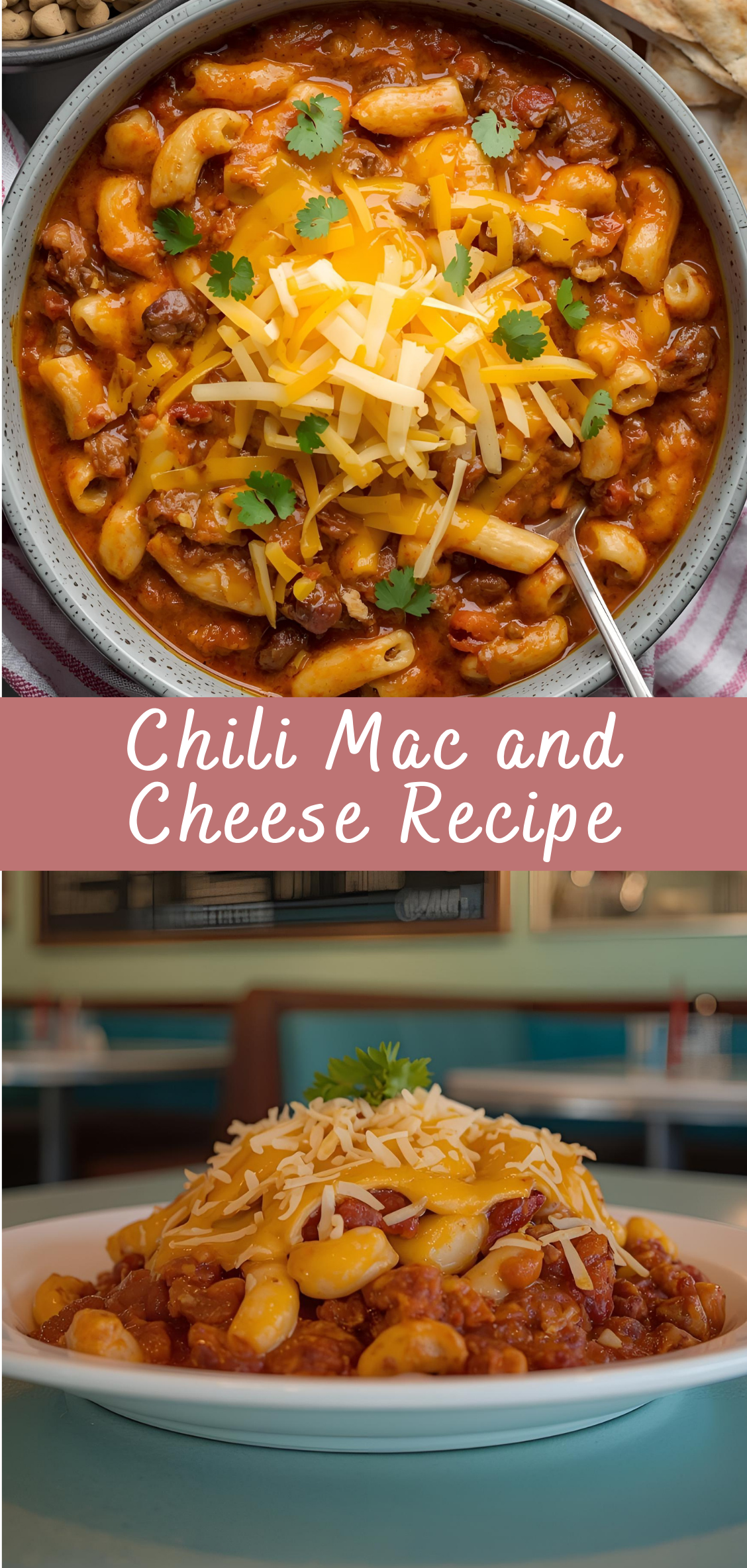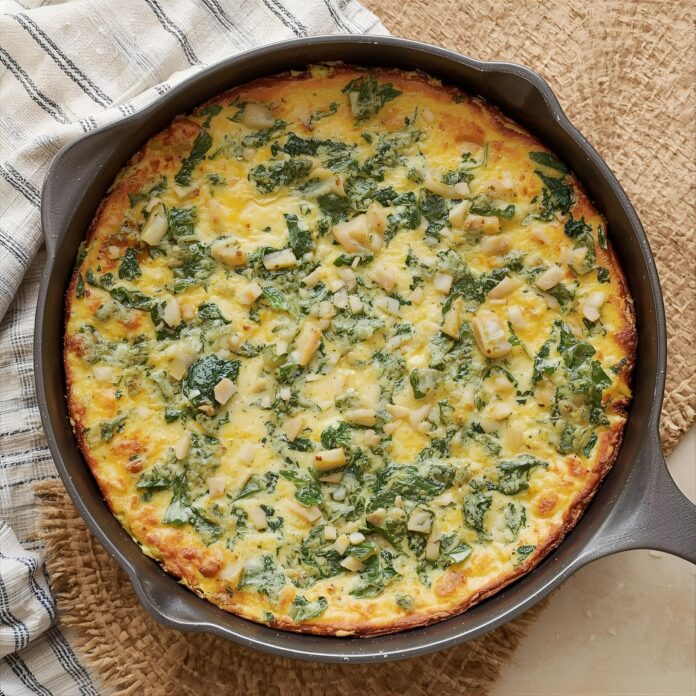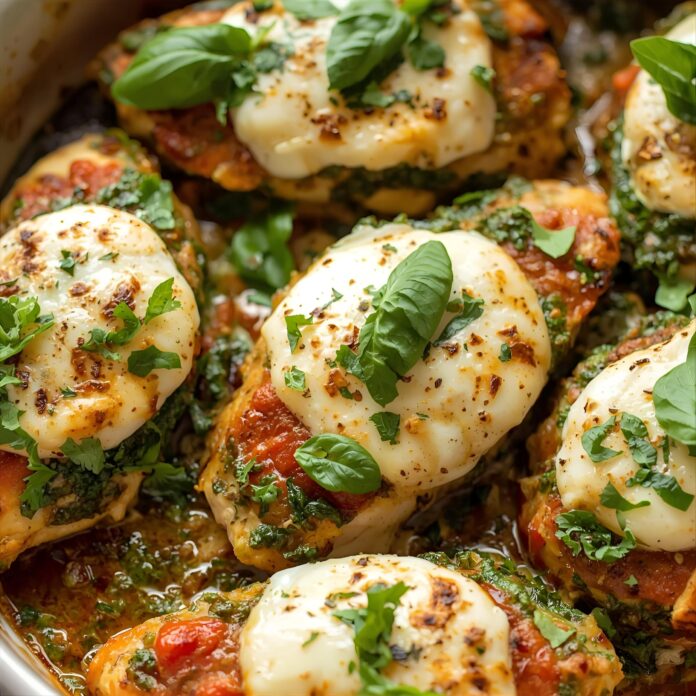Chili Mac and Cheese: The Ultimate Comfort Food Fusion
There are few dishes that capture the essence of comfort food quite like chili and mac and cheese. Each stands tall on its own—mac and cheese with its creamy, indulgent cheesiness, and chili with its bold, hearty spice. But when combined, these two beloved classics create something entirely new: a fusion dish that’s rich, satisfying, and deeply nostalgic. Chili Mac and Cheese is more than just a recipe; it’s a celebration of textures and flavors that bring people together around the dinner table.

Whether you’re a home cook looking to spice up your weeknight meals, a college student craving something filling and budget-friendly, or simply someone with a love for bold, comforting flavors, Chili Mac and Cheese hits all the right notes. It’s hearty enough to feed a crowd, simple enough for a one-pot meal, and versatile enough to be adapted for every taste, diet, or pantry situation.
This long-form recipe guide is more than just a step-by-step set of instructions. Over the course of this article, we’ll dive deep into the rich history and evolution of both chili and mac and cheese, explore ingredient selection and preparation methods, offer multiple variations for different dietary needs, and share expert cooking tips to ensure you get the perfect bowl every single time.
By the end, you won’t just have a go-to Chili Mac and Cheese recipe—you’ll understand the art and science behind it, and perhaps even be inspired to make the dish entirely your own.
Let’s get started.
Step-by-Step Instructions: How to Make Chili Mac and Cheese
This recipe is designed to be approachable yet deeply flavorful. It strikes a balance between the quick convenience of a one-pot meal and the depth of flavor you’d expect from a slow-simmered chili or rich baked mac and cheese. Let’s walk through each step in detail.
Ingredients You’ll Need
For the Chili Base:
-
1 tablespoon olive oil (or neutral oil like vegetable or canola)
-
1 medium yellow onion, finely chopped
-
1 green bell pepper, diced
-
2–3 garlic cloves, minced
-
1 lb (450g) ground beef (or turkey, pork, or plant-based alternative)
-
1 tablespoon tomato paste
-
1 teaspoon ground cumin
-
1 teaspoon smoked paprika
-
2 teaspoons chili powder (adjust to spice preference)
-
½ teaspoon dried oregano
-
Salt and pepper, to taste
-
1 (15 oz) can diced tomatoes (with juices)
-
1 (15 oz) can kidney beans or black beans, drained and rinsed
-
1½ cups beef or chicken broth (or vegetable broth)
For the Mac and Cheese Portion:
-
2 cups elbow macaroni (uncooked)
-
1½ cups whole milk (or half-and-half for richer flavor)
-
2 tablespoons unsalted butter
-
2 tablespoons all-purpose flour
-
2 cups sharp cheddar cheese, shredded (plus more for topping)
-
½ cup mozzarella or Monterey Jack cheese, shredded
-
1 teaspoon Dijon mustard (optional, enhances cheese flavor)
-
Salt to taste
Instructions
Step 1: Build Your Flavor Base with Aromatics
Heat 1 tablespoon of olive oil in a large, heavy-bottomed pot or Dutch oven over medium heat. Once the oil is shimmering (but not smoking), add your chopped onion and diced green bell pepper.
Why this matters: Sautéing the aromatics first brings out their sweetness and depth. Onions and peppers form the aromatic foundation of countless comfort food recipes, and their flavor becomes more complex when slowly cooked until soft and translucent.
Cook for about 5–6 minutes, stirring occasionally, until the onions become translucent and the peppers begin to soften.
Add the minced garlic and cook for another 30–60 seconds, just until fragrant. Don’t let the garlic brown, or it will become bitter.
Step 2: Brown the Ground Meat
Add the ground beef (or your meat of choice) directly into the pot with the sautéed vegetables. Use a wooden spoon or spatula to break the meat into small pieces as it cooks.
Cook until fully browned, about 6–8 minutes, making sure no pink remains. If your meat releases a lot of fat, you may drain some off — but don’t discard all of it. A little bit of fat equals flavor.
Optional Tip: For extra depth, let the meat brown without stirring for the first minute or two. This encourages caramelization (the Maillard reaction) for a richer, meatier taste.
Step 3: Add Tomato Paste and Spices
Once the meat is browned, stir in 1 tablespoon of tomato paste. Cook it for 2–3 minutes, letting it “toast” in the pot. This removes the raw, metallic taste and brings out its natural sweetness and umami.
Next, add your spice mix:
-
1 teaspoon ground cumin
-
1 teaspoon smoked paprika
-
2 teaspoons chili powder
-
½ teaspoon oregano
-
Salt and pepper to taste (start with ½ teaspoon of salt and adjust later)
Stir well to coat the meat and vegetables evenly.
Why toast the spices? Toasting spices in the oil and tomato paste “blooms” their flavor, making your chili taste like it simmered for hours — even though it hasn’t.
Step 4: Add Tomatoes, Beans, and Broth
Pour in the diced tomatoes (with their juices), the drained beans, and your broth of choice (beef, chicken, or vegetable).
Stir everything together to combine into a rich, hearty chili mixture.
Bring the mixture to a gentle boil, then reduce the heat to a simmer.
Cover and simmer for 15–20 minutes, stirring occasionally.
Why this step matters: This allows the flavors to meld and the spices to mellow. Simmering thickens the chili and infuses every bite with flavor. It also gives you time to prepare the pasta and cheese sauce in the next steps.
Step 5: Cook the Pasta Separately (or Not)
You have two choices here:
-
Option A (One-Pot Method): Add the uncooked elbow macaroni directly into the simmering chili. Stir well, cover, and cook for 10–12 minutes, or until pasta is tender. Stir occasionally and keep an eye on the liquid level—add more broth or water if needed.
-
Option B (Separate Boil Method): In a separate pot, bring salted water to a boil and cook the elbow macaroni until just al dente (usually 1 minute less than package instructions). Drain and set aside.
Why consider both?
Cooking the pasta in the chili saves time and cleanup. However, boiling it separately gives you more control over the texture and avoids over-thickening the chili if you’re not careful with liquid levels.
Step 6: Make the Cheese Sauce (Optional but Recommended)
In a small saucepan over medium heat, melt 2 tablespoons of butter. Once melted and bubbling, whisk in 2 tablespoons of all-purpose flour to create a roux.
Cook the roux for 1–2 minutes, stirring constantly, until it turns a light golden color.
Slowly whisk in the milk (1½ cups), making sure there are no lumps.
Cook the mixture, whisking frequently, until it thickens — about 4–5 minutes.
Remove from heat and stir in the shredded cheeses and optional Dijon mustard. Stir until fully melted and smooth.
Why make a separate cheese sauce?
It creates a creamier, smoother cheese flavor compared to simply adding cheese into a hot chili base. The roux stabilizes the sauce and prevents graininess.
Step 7: Combine Chili, Pasta, and Cheese Sauce
If you cooked your pasta separately, now is the time to fold it into the chili base.
Next, pour in your cheese sauce and stir gently to combine everything into a luscious, rich Chili Mac and Cheese.
Taste and adjust for seasoning — more salt, a pinch of cayenne, or even a splash of hot sauce if desired.
Step 8: Add Cheese Topping and Melt (Optional)
If you want a cheesy crust, sprinkle more shredded cheddar or a blend of cheeses over the top of the mixture.
Place the pot under a broiler for 2–3 minutes (oven-safe cookware only), or bake at 375°F (190°C) for 10–15 minutes until the top is bubbly and golden.
Step 9: Rest and Serve
Remove from heat and let the Chili Mac rest for 5 minutes before serving. This helps the flavors settle and thickens the consistency slightly.
Serve hot in bowls, optionally topped with:
-
Fresh chopped parsley or cilantro
-
A dollop of sour cream
-
Sliced green onions
-
Crushed tortilla chips
-
Pickled jalapeños for heat
Chili Mac and Cheese Recipe
There are few dishes that capture the essence of comfort food quite like chili and mac and cheese. Each stands tall on its own—mac and cheese with its creamy, indulgent cheesiness, and chili with its bold, hearty spice. But when combined, these two beloved classics create something entirely new: a fusion dish that’s rich, satisfying, and deeply nostalgic. Chili Mac and Cheese is more than just a recipe; it's a celebration of textures and flavors that bring people together around the dinner table.
Ingredients
- For the chili base:
- 1 tablespoon olive oil
- 1 medium onion, diced
- 3 cloves garlic, minced
- 1 pound ground beef (or ground turkey)
- 1 tablespoon chili powder
- 1 teaspoon ground cumin
- 1/2 teaspoon paprika
- 1/2 teaspoon oregano
- 1/4 teaspoon cayenne pepper (optional)
- Salt and black pepper to taste
- 1 (15 oz) can diced tomatoes
- 1 (8 oz) can tomato sauce
- 1 (15 oz) can kidney beans or black beans, drained and rinsed
- 2 cups beef broth or chicken broth
- For the macaroni & cheese:
- 2 cups elbow macaroni (uncooked)
- 2 cups shredded cheddar cheese
- 1/2 cup shredded mozzarella (optional, for extra creaminess)
- 1/4 cup milk or heavy cream
Instructions
- Sauté aromatics:
Heat olive oil in a large pot or Dutch oven over medium heat. Add diced onion and sauté until softened (about 3–4 minutes). Add minced garlic and cook for another 30 seconds. - Cook the meat:
Add ground beef. Cook until browned, breaking it up with a spoon (about 5–7 minutes). Drain excess fat if necessary. - Season:
Stir in chili powder, cumin, paprika, oregano, cayenne, salt, and pepper. Cook for 1 minute to bloom the spices. - Add liquids and beans:
Stir in diced tomatoes, tomato sauce, beans, and broth. Bring to a simmer. - Add pasta:
Stir in the uncooked macaroni. Reduce heat, cover, and simmer for 10–12 minutes, stirring occasionally, until the pasta is tender and most of the liquid is absorbed. - Make it cheesy:
Stir in the shredded cheddar, mozzarella, and milk or cream. Mix until melted and creamy. - Serve:
Taste and adjust seasoning if needed. Serve hot, optionally topped with chopped parsley, green onions, sour cream, or crushed tortilla chips.
Notes
- One-pot tip: If using a Dutch oven or deep skillet, no need to boil pasta separately.
- Make it vegetarian: Use plant-based meat or add extra beans (like pinto or chickpeas).
- Spice level: Adjust cayenne or chili powder to your heat preference.



